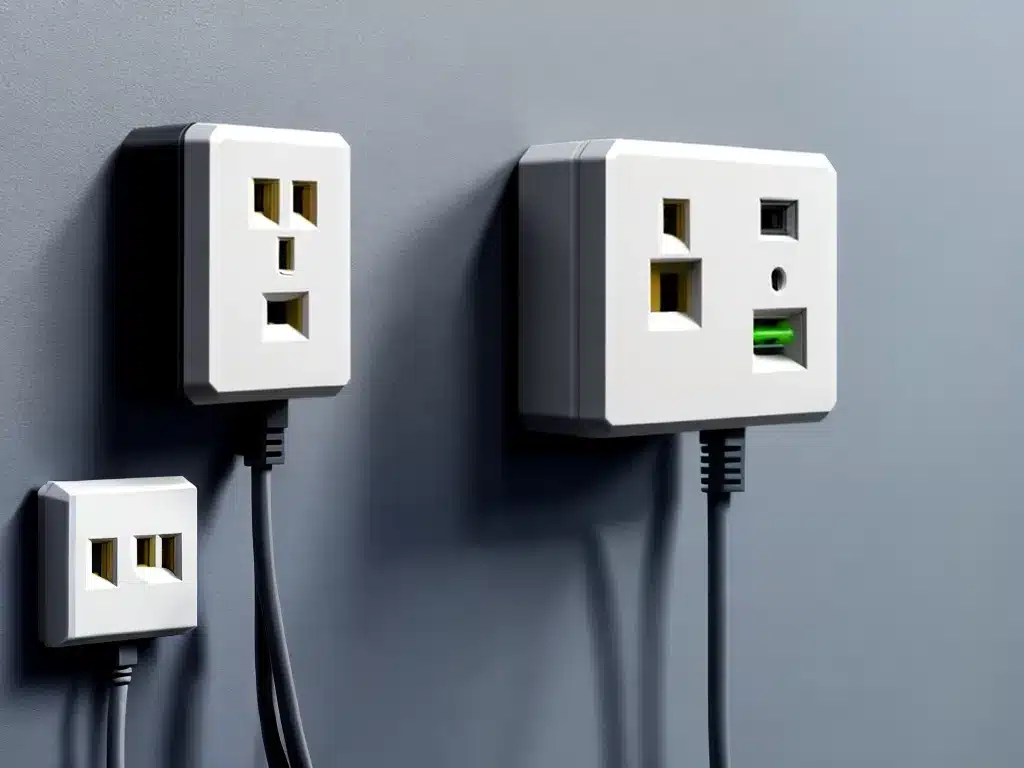
How the Humble Wall Plug Came to Power Our World
For most of us, wall plugs are such a mundane part of everyday life that we barely even notice them. Yet these innocuous little devices have a fascinating history and have enabled the amazing technological world we live in today.
The Origins of Electricity in the Home
In the late 1800s, electricity was still a novelty utilized mainly for lighting in wealthy homes and businesses. The first wall plugs emerged around this time as more efficient and safer alternatives to hanging bare wires from ceilings.
Thomas Edison is often credited with popularizing wall plugs through his push to establish the first electricity distribution system in New York City in the 1880s. Edison wished to prove the viability of electricity as an illumination source and the safety of supplying it directly into buildings through buried cables and wall outlets.
Other notable figures like Nikola Tesla, George Westinghouse, and Samuel Insull further developed alternating current systems and infrastructure that allowed electricity to be distributed more widely and economically across regions. Their work paved the way for wall outlets as we know them to become commonplace in homes by the 1920s and 30s.
Standardization and Safety
As electricity demand boomed in the early 20th century, a maze of different outlets and plug designs emerged, causing confusion and safety issues.
-
In 1904, Harvey Hubbell patented a two-prong plug with prongs separated by a gap at the base. This “parallel blade” design prevented electricity from flowing until the plug was fully inserted, improving safety.
-
The first National Electrical Code in 1897 established guidelines for safer wiring. Further updates in the 1920s led to the standardization of wall outlets at 120 volts.
-
In the late 1920s, the parallel blade plug evolved into the polarized version with one prong larger than the other that could not be inserted incorrectly.
-
The common NEMA 5-15 outlet used today has been standard since the 1950s, with a neutral slot perpendicular to the live slot.
-
The third-prong grounding pin was introduced in the 1960s to prevent electric shocks by grounding the device chassis.
Advancements in safety and standardization were crucial for the adoption of electricity and wall outlets in everyday environments.
Powering Technology and Innovation
As electricity became widely available in the 20th century, the humble wall plug enabled an explosion of innovation by powering transformative devices like:
- Lightbulbs – from carbon filaments to LEDs
- Refrigerators – revolutionizing food storage and extending freshness
- Radios – allowing real-time audio communication and entertainment
- Televisions – pioneering broadcast media and visual entertainment
- Computers – enabling advanced automation, data analysis, and global digital connectivity
Steve Jobs of Apple emphasized the importance of wall plugs in a 1994 interview:
“The desktop metaphor was invented because one needed to plug in. That is a very big deal. And you needed to plug in to get electricity! Just like you had to jack in to get telephone service. It’s not a trivial concept.“
Today, wall outlets allow us to conveniently connect a vast array of digital devices and smart appliances that have transformed how we live and work.
The Grid and the Future
The proliferation of wall plugs and demand for electricity led to the build out of massive power grids transmitting electricity from sources like coal plants, hydroelectric dams, and nuclear reactors over vast distances.
While this AC grid system has powered exponential growth over the past century, it faces challenges today in sustainability, security, and meeting growing energy needs.
Potential solutions like:
- Renewable energy integration
- Microgrids and distributed generation
- Smart grids and energy management
- Energy storage innovations
aim to upgrade the aging grid infrastructure and deliver secure, clean electricity to support technologies of the future. Wall outlets will facilitate smarter, more efficient usage on the path ahead.
So while they now blend into the background, wall outlets and the whole interdependent system that powers them should not be taken for granted. From enabling illumination in the 1800s to smartphones today, the humble wall plug has profoundly shaped progress and improved human lives.
